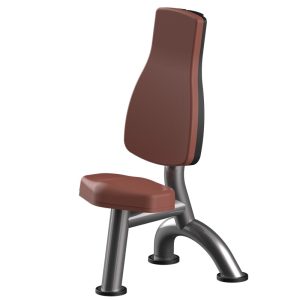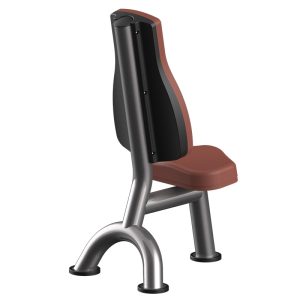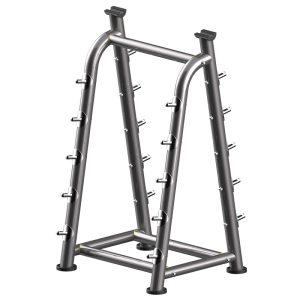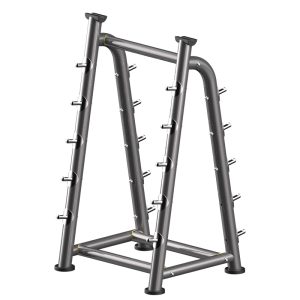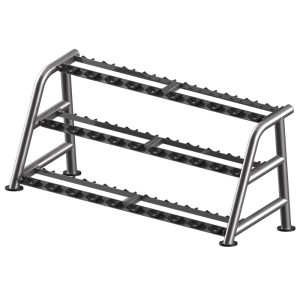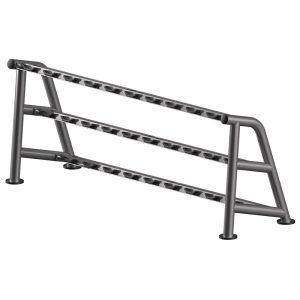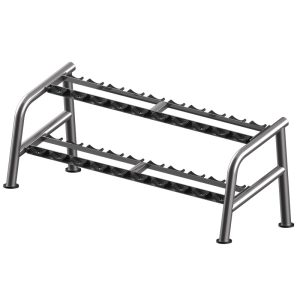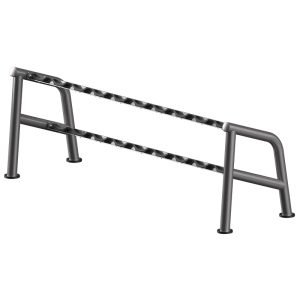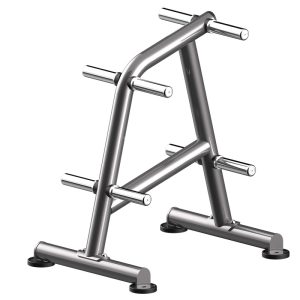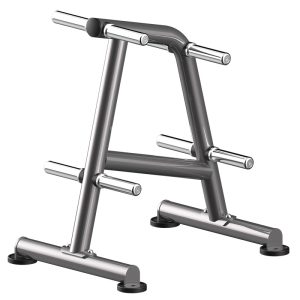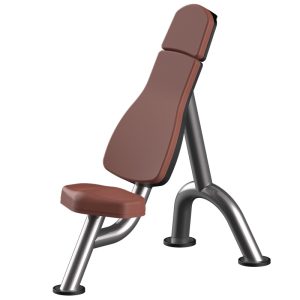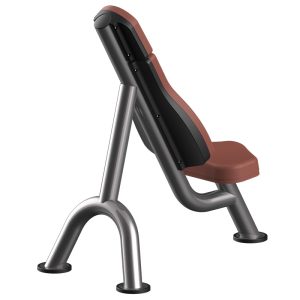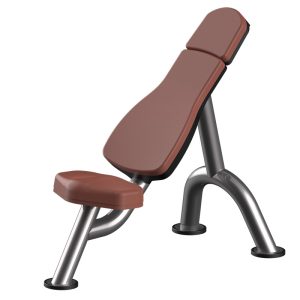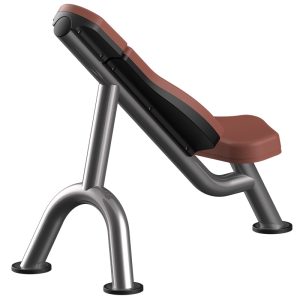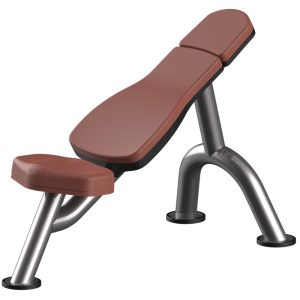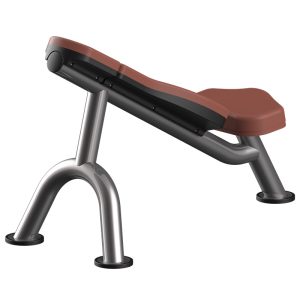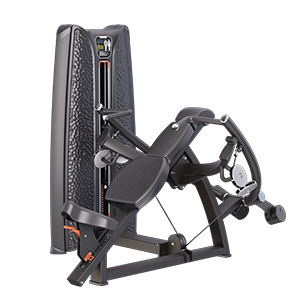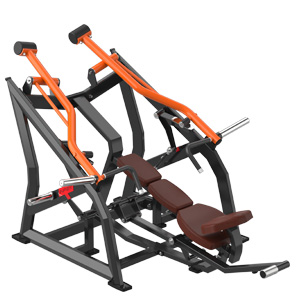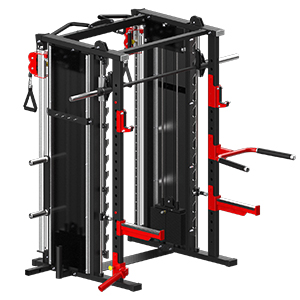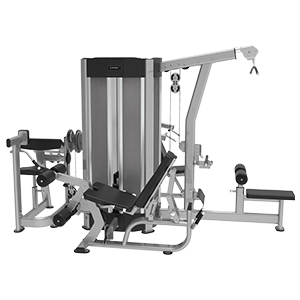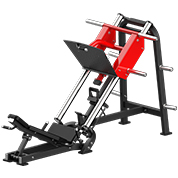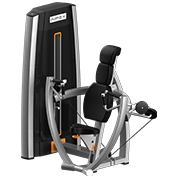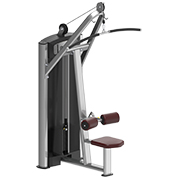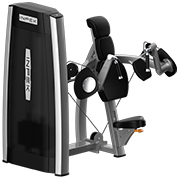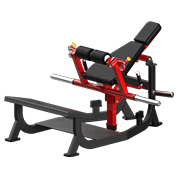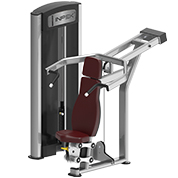- Home
- /
- Free Weights
Free Weights for All: Flat Bench, Multi Power Cage And More
Free weights have been the cornerstone of fitness since ancient times, employed to build strength and enhance physical health. These simple yet effective tools use weight resistance to strengthen muscles, burn calories, and promote overall wellness. At Inpek Fitness, we offer an extensive range of commercial free weights and training equipment designed to elevate your fitness experience. Our carefully curated selection blends functionality with aesthetic appeal, making them perfect for any gym or fitness space. Our product lineup includes: Free Weight Equipment Barbells and Dumbbells: Straight and Curved Bar Combination Barbell Racks Ten Pairs of Rubber-Coated Combination Dumbbell Racks Three-Layer Fifteen Pairs of Rubber-Coated Dumbbell Racks Barbell Plate Racks Bench Press Racks Incline Bench Press Racks Flat Bench Press Racks Decline Bench Press Racks Curl Racks Seated Biceps Curl Racks Abdominal Training Equipment Adjustable Abdominal Training Boards Fixed Angle Abdominal Training Boards Knee Lift Abdominal Racks Knee Lift Abdominal Racks with Pull-Ups Roman Chairs and Multi-Purpose Chairs Adjustable Roman Chairs Multi-Purpose Adjustment Chairs Positive and Negative Angle Adjustment Chairs Multi-Angle Adjustment Chairs Seat Linkage Multi-Purpose Adjustment Chairs Multi-Purpose Flat Chairs Multi-Purpose Right Angle Chairs Squat Racks and Benches Combination Squat Benches Gantry Squat Racks Glute Bridge Squat Racks Hip Training Stations Multi-Purpose Hip Multi-Function Training Stations (Basic and Professional Versions) Hip Plate-Mounted Hip Trainers Additional Training Equipment 30° Fixed Angle Chairs 45° Fixed Angle Chairs 60° Fixed Angle Chairs The history of free weights, particularly dumbbells, dates back to ancient Greece, where athletes used halteres as both lifting tools and balance aids during the long jump. Today, free weights remain essential not only for building muscle but also for stabilizing muscles during workouts, resulting in improved balance and coordination. Whether you're a dedicated lifter, a fitness enthusiast, or a gym owner, Inpek Fitness provides high-quality free weights and training equipment to help you achieve your strength-building goals and enhance your overall health and fitness. Our products are designed to support a wide range of exercises, ensuring that you have the tools necessary for a comprehensive and effective workout regimen. Choose Inpek Fitness for reliable, durable, and aesthetically pleasing free weights and training equipment that cater to all your fitness needs. Elevate your fitness journey with our exceptional product range and experience the difference quality makes.
Commercial Free Weights for Sale
Considerations When Purchasing Commercial Free Weights
Quality and Durability:
The foremost consideration when purchasing commercial free weights is their quality and durability. Given that these weights will be used in a gym setting where they experience frequent and heavy usage, it’s crucial to choose products made from high-quality materials. Look for free weights constructed from solid cast iron, high-density rubber, or durable steel, which can withstand wear and tear over time. Additionally, consider the finishing of the weights; rubber-coated or chrome-plated options can enhance longevity and protect flooring from damage.
Variety of Weight Options:
A diverse range of weight options is essential to accommodate all fitness levels and training goals. When selecting commercial free weights, ensure that there is an extensive selection available—from lighter weights for beginners and rehabilitation exercises to heavier weights for experienced lifters. This variety allows users to progress their workouts safely and effectively, making it easier to incorporate principles of progressive overload into their training.
Ergonomics and Design Features:
The design of free weights can significantly impact user experience and safety. Look for weights with ergonomic grips that ensure comfort during lifts, as well as designs that prevent slippage. Dumbbells with a hexagonal shape can help keep them from rolling away when set down, while barbells with knurling provide a better grip. Additionally, consider whether the weights are easy to handle, especially for users who may be lifting them frequently.
Storage and Space Efficiency:
Efficient storage solutions are critical in a commercial gym where space may be limited. When purchasing free weights, consider how they will be stored. Investing in a high-quality rack or storage system can help keep weights organized, accessible, and safe. A well-designed storage solution can prevent clutter and reduce the risk of accidents, ensuring a safer workout environment for all users.
Cost and Budget:
While quality is paramount, it’s also important to consider your budget. Commercial free weights can vary significantly in price, so it’s essential to find a balance between quality and affordability. Look for brands that offer competitive pricing without compromising on the durability and performance of their weights. Additionally, consider potential package deals that include multiple sets or a combination of weights, which can provide better value for your investment.
Brand Reputation and Warranty:
When selecting commercial free weights, consider purchasing from reputable brands known for their quality and customer service. Research user reviews and testimonials to gauge satisfaction and performance. Additionally, check for warranty options, as a good warranty can provide peace of mind regarding the longevity and reliability of your purchase. Brands that stand behind their products often offer warranties that cover manufacturing defects, which can be a significant advantage in a commercial setting.
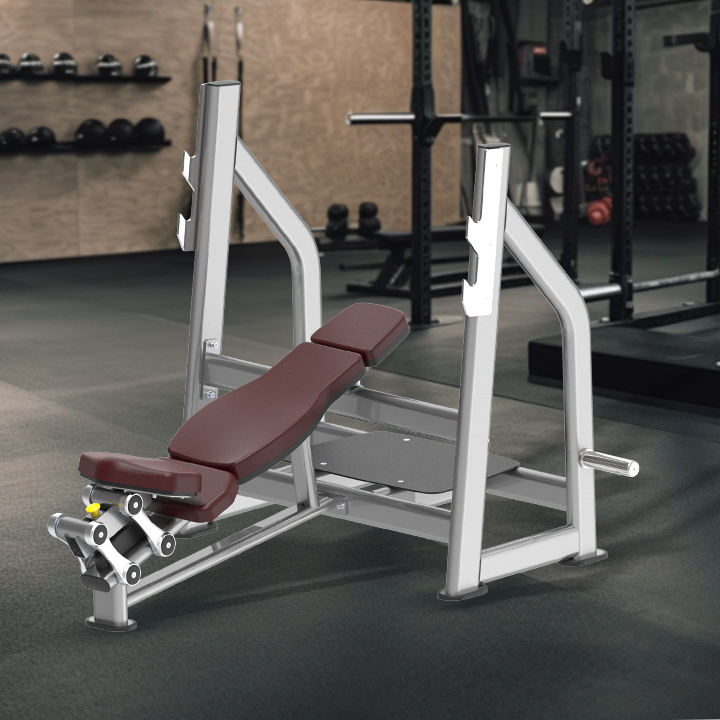
Free Weight Set with Rack
Benefits of Purchasing a Complete Free Weight Set with a Rack
Investing in a complete free weight set with a rack provides several substantial advantages that enhance the overall training experience for users in various fitness settings. Here are some key benefits:
Space-Saving Organization:
One of the most significant advantages of having a complete free weight set with a rack is the efficient organization it offers. A dedicated rack provides a designated space for each weight, helping to keep the workout area tidy and free of clutter. This organization allows users to quickly locate and access the weights they need, making transitions between exercises seamless. In environments where space is limited, a rack can optimize the available area, ensuring that weights are stored neatly and safely.
Enhanced Safety and Stability:
A well-designed rack enhances safety during workouts by preventing weights from rolling or falling. This stability reduces the risk of accidents, particularly in busy gym environments where multiple users may be lifting simultaneously. Proper storage of weights also minimizes hazards, as it encourages users to return weights to their designated spots after use. This practice fosters a culture of safety and responsibility, making the training environment more enjoyable for everyone.
Convenience and Accessibility:
Having a complete set of free weights with a rack means users can quickly access a variety of weights without needing to search through disorganized piles or different areas of the gym. This convenience encourages users to maximize their workout time and efficiency. Whether they need lighter weights for warm-ups or heavier weights for strength training, everything is readily available and easy to retrieve.
Improved Workout Variety:
A comprehensive free weight set allows for a broad range of exercises that can target different muscle groups. With various weights at their disposal, users can incorporate a mix of isolation and compound movements into their routines, promoting balanced muscle development and functional strength. This variety is essential for preventing workout plateaus and keeping training sessions engaging.
Encourages Progressive Overload:
A complete free weight set enables users to progressively increase the weights they lift over time, which is crucial for building strength and muscle. As users become stronger, they can easily adjust their weights to continue challenging their muscles, leading to improved performance and fitness results.
Cost-Effectiveness:
Purchasing a complete free weight set with a rack can often be more cost-effective than buying individual weights separately. Many retailers offer package deals that include a variety of weights and a storage rack, providing significant savings compared to purchasing items individually. This approach allows users to obtain a comprehensive set of equipment at a better value.
Types of Free Weight Sets Available
There are various types of free weight sets available, catering to different workout needs and preferences.
Combination Sets: These sets typically include a mix of dumbbells, kettlebells, and sometimes additional accessories like resistance bands or medicine balls. Combination sets offer great versatility, allowing users to perform a wide range of exercises targeting various muscle groups. By having both dumbbells and kettlebells, users can diversify their workouts, integrating functional strength training and traditional lifting techniques. This variety can be especially beneficial for those looking to enhance their overall fitness levels and keep their routines fresh and engaging.
Adjustable Weight Sets: Adjustable dumbbells are another popular option for those seeking versatility in their workouts. These sets allow users to easily change the weight as needed, accommodating various exercises and fitness levels without the need for multiple sets of fixed weights. Adjustable sets can save space and provide cost efficiency, making them an excellent choice for facilities with limited space.
Collaborate with Inpek Fitness Experts for Your Commercial Gym Projects
Looking to enhance your gym with premium equipment? Have inquiries or ideas? Complete the form below to engage with our expert team. We’ll work with you to realize your fitness facility goals efficiently and effectively.
FAQs about Free Weights
What are the three types of free weights?
The three main types of free weights are dumbbells, barbells, and kettlebells.
Dumbbells are handheld weights that come in various sizes and weights, typically ranging from a few pounds to over 100 pounds. They are highly versatile and can be used for a wide range of exercises, making them ideal for targeting specific muscle groups or performing compound movements.
Barbells are longer bars that can have weights added to either end, allowing for heavier lifting. They are commonly used for exercises such as squats, deadlifts, and bench presses. Barbells are excellent for building overall strength and are often favored in powerlifting and bodybuilding routines.
Kettlebells are round weights with a handle on top, allowing for unique swinging and lifting movements that engage multiple muscle groups. They are particularly effective for functional training and cardiovascular workouts. Each type of free weight offers unique benefits, making them suitable for various fitness levels and training styles.
Are commercial gym weights lighter?
Commercial gyms typically provide a wide range of weights, from very light options suitable for beginners to heavy weights designed for advanced lifters. The purpose of having a diverse selection is to accommodate all fitness levels and training styles within a single facility. Additionally, commercial gym weights are often designed for durability and heavy usage, which can influence their appearance and feel. In some cases, gyms may have lighter weights available for specific group classes or rehabilitation exercises, ensuring all members can participate regardless of their strength level. Ultimately, the variety of weights in a commercial gym is intended to support a diverse clientele and promote effective training for everyone.
What is a good weight for free weights?
Determining a good weight for free weights largely depends on individual fitness levels, goals, and the specific exercise being performed. For beginners, starting with lighter weights is advisable to master proper form and technique before progressing to heavier loads. This might mean starting with dumbbells weighing between 5 to 15 pounds, depending on the exercise and individual strength. As individuals become more comfortable and confident in their lifting abilities, they can gradually increase the weight in small increments—typically by 2.5 to 5 pounds—to continue challenging their muscles. For more experienced lifters, a good weight can vary widely based on personal strength levels and training goals, often ranging from 20 pounds to over 100 pounds for exercises like squats or deadlifts. It's essential to choose a weight that allows for performing the desired number of repetitions (usually 8-12 for muscle building) with good form while still providing a challenge.
What is a disadvantage of using free weights?
One significant disadvantage of using free weights is the increased risk of injury, particularly for beginners or those unfamiliar with proper lifting techniques. Free weights require greater stabilization and control than machine-based exercises, as they do not provide guided movements. This can lead to poor form if users are not careful, potentially resulting in strains or injuries to muscles and joints. Without proper instruction or supervision, individuals may struggle to maintain proper posture, particularly during heavy lifts or complex movements.
Additionally, using free weights may require more space than traditional gym machines. Users also need to invest time in learning proper techniques and building the necessary strength to safely handle heavier weights, which can be challenging for beginners. However, with proper education and guidance, many of these disadvantages can be mitigated, allowing users to safely and effectively incorporate free weights into their training routines.
Can beginners use free weights?
Yes, beginners can absolutely use free weights, and doing so can be beneficial for developing strength, coordination, and proper lifting techniques. Starting with free weights can help beginners learn the fundamentals of weight training, such as balance, stability, and the mechanics of various exercises. It's advisable for beginners to start with lighter weights to master their form and gradually progress to heavier loads as they become more comfortable and confident in their abilities.
It is also recommended that beginners seek guidance from fitness professionals or trainers to ensure they are using proper techniques and to receive personalized workout plans that suit their fitness levels and goals. Incorporating free weights into a workout routine can provide a versatile and effective way to build strength and improve overall fitness. As they gain experience, beginners can explore a wide range of exercises, making free weights a valuable addition to their fitness journey.
Do free weights burn fat?
Yes, using free weights can help burn fat as part of an effective fitness program. When incorporated into a strength training routine, free weights can increase muscle mass, which in turn boosts your resting metabolic rate (RMR). This means that even at rest, your body burns more calories as you have more muscle tissue. Strength training with free weights also stimulates the afterburn effect, known scientifically as excess post-exercise oxygen consumption (EPOC), where the body continues to burn calories after a workout as it recovers. Additionally, combining free weight exercises with cardiovascular activities can enhance overall calorie expenditure, further aiding in fat loss. However, it’s essential to pair your workouts with a balanced diet to achieve optimal fat-burning results. Therefore, while free weights are effective for building strength and muscle, they can also play a significant role in burning fat when part of a comprehensive fitness plan.
Is it better to work out with free weights or machines?
Whether it is better to work out with free weights or machines largely depends on individual fitness goals, preferences, and experience levels. Free weights offer the advantage of versatility, allowing users to perform a wide range of exercises that engage multiple muscle groups and promote functional strength. They also require greater stabilization and coordination, which can enhance overall body control and balance. Additionally, free weights typically allow for a more extensive range of motion, leading to greater muscle activation.
On the other hand, machines provide guided movements, making them safer for beginners who may not be familiar with proper form. They can help isolate specific muscles and are often easier to use, allowing individuals to focus on certain muscle groups without the need for stabilizing other muscles. Machines can also reduce the risk of injury since they are designed to support the body during exercises.
Ultimately, incorporating both free weights and machines into your routine can provide a balanced workout regimen. It’s essential to choose what aligns with your fitness level and goals, as both options have their unique benefits.
What are free weights?
Free weights are portable fitness equipment that individuals can use to perform a wide variety of strength training exercises without being fixed to a machine. The most common types of free weights include dumbbells, barbells, and kettlebells. These weights come in various sizes and can be used for a range of exercises that target different muscle groups, making them highly versatile for both strength training and functional fitness.
Free weights are not only beneficial for building muscle but also for improving coordination, balance, and stability, as they require the engagement of stabilizing muscles during workouts. They allow for a greater range of motion compared to machines, promoting functional movements that mimic everyday activities. Additionally, free weights can be easily adjusted to accommodate different fitness levels, making them suitable for beginners and advanced users alike. Incorporating free weights into a workout routine can enhance overall fitness and help individuals achieve their specific fitness goals.
Are free weights safe?
Free weights can be safe when used correctly, but they do come with certain risks, especially for beginners who may not be familiar with proper lifting techniques. The primary concern with free weights is the potential for injury if users do not maintain proper form or attempt to lift weights that are too heavy. It's crucial to prioritize technique over the amount of weight lifted to reduce the risk of strains, sprains, or other injuries.
To enhance safety when using free weights, beginners are encouraged to start with lighter weights to master their form and gradually increase resistance as they gain confidence and strength. Using a mirror or training with a partner can help ensure proper alignment and technique. Additionally, incorporating a structured warm-up routine and allowing for adequate rest between sets can further enhance safety during workouts. Overall, with proper instruction, attention to form, and cautious weight selection, free weights can be a safe and effective component of any fitness regimen.
What is the difference between body weights and free weights?
The primary difference between body weights and free weights lies in the type of resistance used during exercises. Body weight exercises utilize the individual's own weight as resistance to build strength and endurance. Common examples include push-ups, squats, lunges, and planks. Body weight training is beneficial for improving overall strength, flexibility, and balance and can be performed anywhere, making it highly accessible.
In contrast, free weights refer to external weights such as dumbbells, kettlebells, and barbells that users lift to provide resistance. Free weights allow for more varied exercises and enable users to target specific muscle groups more effectively. They can also be adjusted to provide progressive overload, which is essential for muscle growth and strength development.
Both body weight and free weight exercises have their unique advantages, and incorporating both into a fitness routine can provide a well-rounded approach to strength training and conditioning. While body weight exercises are excellent for building functional strength and improving endurance, free weights can enhance muscle size and strength when used properly.
Why do people use free weights?
People use free weights for a variety of reasons, primarily due to their versatility, effectiveness, and convenience in strength training. One of the main advantages of free weights is that they allow for a wide range of exercises that can target specific muscle groups or provide full-body workouts. This versatility makes them suitable for individuals with different fitness levels, from beginners to advanced lifters.
Free weights also promote functional fitness by engaging stabilizing muscles during exercises. This aspect enhances overall balance, coordination, and core strength, which can improve performance in everyday activities and sports. Additionally, free weights can be easily adjusted to accommodate different resistance levels, allowing users to progress at their own pace and achieve their personal fitness goals.
Another reason people prefer free weights is the ability to perform compound movements, such as squats, deadlifts, and bench presses, which work multiple muscle groups simultaneously. These exercises can be time-efficient and are effective for building muscle and strength. Overall, free weights are a popular choice for those looking to enhance their fitness routines, build strength, and achieve a variety of health and fitness goals.
Can you build muscle with free weights?
Yes, you can build muscle effectively with free weights. Free weights are highly effective tools for muscle hypertrophy, which is the process of increasing muscle size through resistance training. When used properly, free weights allow for a range of exercises that target different muscle groups, facilitating balanced development and strength gains.
One of the key benefits of using free weights for muscle building is the ability to perform compound exercises such as squats, deadlifts, bench presses, and overhead presses. These movements engage multiple muscle groups and joints, promoting overall muscle growth and functional strength. Additionally, free weights can be easily adjusted to provide varying levels of resistance, allowing individuals to progressively overload their muscles. This progressive overload is crucial for stimulating muscle growth, as it challenges the muscles to adapt and grow stronger over time.
Moreover, free weights engage stabilizing muscles, which can lead to better muscle activation and greater strength gains compared to isolated machine exercises. As a result, incorporating free weights into a regular training routine can significantly contribute to muscle building and overall fitness improvement. However, it's important to focus on proper form and technique to maximize benefits and minimize the risk of injury.
What is the main difference between free weights and a universal machine?
The main difference between free weights and a universal machine lies in their design and the way they provide resistance during exercises. Free weights include equipment like dumbbells, barbells, and kettlebells that are not attached to any machine or apparatus. They require users to stabilize the weight during exercises, which engages additional muscle groups and improves overall balance and coordination. This type of training allows for a greater range of motion, making it suitable for various functional movements.
In contrast, a universal machine, often referred to as a multi-gym, is a piece of equipment that combines several strength training stations into one unit. These machines provide guided movements, allowing users to perform exercises with a fixed range of motion. While universal machines are beneficial for isolating specific muscles and can be easier for beginners to use, they may not engage stabilizing muscles to the same extent as free weights. Overall, both types of equipment have their benefits, and the choice between them often depends on individual fitness goals and preferences.
What free weights should I start with?
When starting with free weights, it's essential to select weights that are manageable and allow you to focus on form and technique. Beginners typically benefit from starting with lighter weights to master the fundamentals of strength training. A common recommendation is to begin with dumbbells ranging from 5 to 15 pounds, depending on your fitness level and experience. Adjustable dumbbells can also be a great option, as they allow you to change weights easily as you progress.
In addition to dumbbells, consider incorporating a barbell with lighter weight plates for exercises like squats and deadlifts. If you're new to strength training, it may be helpful to work with a trainer who can guide you in selecting appropriate weights and designing a balanced workout routine. The key is to choose weights that challenge you but still allow you to maintain proper form throughout each exercise. As you gain strength and confidence, gradually increase the weights to continue challenging your muscles.
Can you lift free weights every day?
While it is possible to lift free weights every day, it's essential to consider your body's recovery needs and overall training plan. Resistance training, including lifting free weights, places stress on the muscles, which requires time to recover and adapt. Overtraining without adequate rest can lead to fatigue, decreased performance, and increased risk of injury.
For beginners, it’s generally recommended to allow at least one day of rest between workouts that target the same muscle groups. This approach gives your muscles time to repair and grow stronger. More experienced lifters may use a different strategy, such as splitting their workouts into different muscle groups (e.g., upper/lower body splits) to allow for daily lifting while ensuring that specific muscle groups have adequate recovery time. Ultimately, listening to your body, incorporating rest days, and structuring a well-balanced training program are essential for long-term success and progress when using free weights.
Can you get a full workout with free weights?
Yes, you can achieve a full workout with free weights, making them a highly versatile option for strength training. Free weights allow for a wide range of exercises that target all major muscle groups, including the chest, back, shoulders, arms, legs, and core. By incorporating various movements, such as squats, deadlifts, bench presses, and rows, you can create a balanced routine that engages multiple muscle groups effectively.
Additionally, free weights facilitate compound movements, which work multiple joints and muscle groups simultaneously. This type of training not only promotes muscle growth but also improves functional strength and coordination, enhancing overall physical fitness. For a full workout with free weights, it’s essential to design a balanced routine that includes exercises for different muscle groups, ideally incorporating both compound and isolation exercises. By doing so, you can ensure comprehensive development and maintain an efficient workout schedule that meets your fitness goals.
Why are free weights so much harder?
Free weights are often perceived as harder to use compared to machines for several reasons. First, when using free weights, individuals must engage stabilizing muscles to maintain control and balance during exercises. This requirement for stabilization can make exercises more challenging, especially for beginners who may not have developed the necessary coordination and muscle strength.
Another reason free weights can be more difficult is the increased range of motion they provide. Unlike machines that often guide your movements along a fixed path, free weights allow for greater freedom of movement, which can lead to more complex and demanding exercises. Users need to focus on proper form and technique to avoid injury, which adds an additional layer of difficulty.
Lastly, the psychological aspect of using free weights can also play a role. Many people feel more comfortable and secure using machines, particularly if they are new to strength training. As users gain experience and confidence with free weights, they often find that they can perform exercises more effectively and feel a greater sense of accomplishment as they progress.
Why do bodybuilders use machines instead of free weights?
Bodybuilders often incorporate machines into their training routines for several reasons. One significant advantage of machines is that they allow for targeted isolation of specific muscle groups. By focusing on a single muscle, bodybuilders can maximize hypertrophy in that area, which is essential for achieving the defined muscle appearance that many bodybuilders strive for. Machines can also provide a controlled movement pattern, reducing the risk of injury when lifting heavy weights, which is particularly beneficial for advanced lifters pushing their limits.
Additionally, machines can help bodybuilders maintain proper form during exercises, especially when they are fatigued from intense training sessions. This assistance can be crucial for preventing injuries and ensuring that the target muscles are effectively engaged.
Moreover, using machines allows bodybuilders to easily adjust resistance levels, making it simple to perform drop sets or increase weights without changing equipment. This convenience can enhance workout efficiency and productivity. While free weights are an integral part of many bodybuilding routines, machines play a valuable role in achieving muscle definition and strength in a structured and safe manner.
Do free weights require more skill?
Yes, free weights typically require more skill and coordination compared to machines. When using free weights, individuals must actively stabilize the weights during exercises, which engages additional muscle groups and promotes better balance and control. This requirement for stabilization means that users must pay closer attention to their form and technique, particularly as they lift heavier weights. Proper form is crucial to avoid injuries and ensure effective muscle engagement, making it important for users to have a good understanding of the exercises they are performing.
Beginners may find free weights challenging at first, as they require more focus and body awareness. However, with practice and guidance, individuals can develop the necessary skills to use free weights safely and effectively. Many people benefit from working with a fitness professional when starting with free weights to ensure they learn the correct techniques. As users gain experience and confidence, they often find that free weights enhance their overall strength training experience and lead to better functional fitness outcomes.
Is it better to train with free weights?
Training with free weights is often considered beneficial for a variety of reasons. One of the primary advantages is that free weights engage multiple muscle groups and require stabilization, which helps develop functional strength and coordination. Unlike machines that guide your movements along a fixed path, free weights allow for a greater range of motion, which can enhance overall muscle activation and growth. This increased engagement of stabilizing muscles can lead to improved balance and proprioception, skills that are essential for daily activities and athletic performance.
Additionally, free weights can be more versatile than machines. They can be used in various exercises targeting different muscle groups, allowing for a comprehensive workout routine. Whether you’re looking to build muscle, improve endurance, or enhance athletic performance, free weights can effectively contribute to these goals. Ultimately, while both free weights and machines have their advantages, many fitness enthusiasts and trainers advocate for the inclusion of free weights in training programs to maximize strength development and functional fitness.
How to use free weights properly?
Using free weights properly involves several key principles to ensure safety and effectiveness. First, it’s important to start with a weight that allows you to maintain proper form throughout the exercise. Beginners should begin with lighter weights to master their technique before progressing to heavier loads. Always perform a thorough warm-up to prepare your muscles for lifting and reduce the risk of injury.
When lifting free weights, focus on your posture and alignment. Keep your core engaged and back straight to avoid unnecessary strain on your spine. Ensure that your movements are controlled and deliberate, avoiding sudden or jerky motions that can lead to injury. It’s also beneficial to use mirrors to monitor your form or to have a workout partner provide feedback.
Finally, remember to breathe correctly during lifts—exhale during the exertion phase and inhale during the relaxation phase. Allow for adequate rest between sets and incorporate a cool-down routine to help your body recover. By following these guidelines, you can effectively use free weights to achieve your fitness goals safely.
How do you build strength with free weights?
Building strength with free weights involves several key principles and techniques. First, it's essential to focus on progressive overload, which means gradually increasing the weight you lift over time. This principle encourages muscles to adapt and grow stronger as they face increasing resistance. Start with a weight that challenges you but still allows you to maintain proper form and technique throughout your repetitions.
Incorporate a variety of exercises that target different muscle groups, such as squats, deadlifts, bench presses, and overhead presses. This variety not only helps to prevent plateaus but also promotes balanced muscle development. Aim for a rep range that suits your goals; typically, lower reps (around 1-6) are best for building strength, while moderate reps (6-12) can help with muscle hypertrophy.
Additionally, ensure you allow adequate recovery time between workouts. Muscles need time to repair and grow stronger after resistance training. A well-structured workout plan, combined with a nutritious diet rich in protein and healthy carbohydrates, will support your strength-building efforts. Consistency and commitment are key; with regular training and proper nutrition, you can effectively build strength with free weights.
What is the free weights method of training?
The free weights method of training refers to a strength training approach that utilizes free weights—such as dumbbells, barbells, and kettlebells—to build muscle strength, endurance, and overall fitness. This method focuses on exercises that require the user to control the weights without the guidance of machines, which engages stabilizing muscles and promotes better overall coordination and balance.
Training with free weights allows for a wide range of exercises that can be customized to meet individual fitness goals. Users can perform compound movements that engage multiple joints and muscle groups, such as squats, deadlifts, and bench presses, or isolation exercises that target specific muscles, such as bicep curls or tricep extensions.
The free weights method emphasizes the importance of proper form and technique, as users must maintain control of the weights throughout their movements. This training method is particularly beneficial for developing functional strength, which translates into improved performance in daily activities and sports. Additionally, free weights training can be adjusted for all fitness levels, making it accessible to beginners as well as advanced athletes.
Is bench press free weight?
Yes, the bench press is considered a free weight exercise when performed with a barbell or dumbbells. In this exercise, users lie on a bench and push the weight upward from their chest to develop strength in the chest, shoulders, and triceps. When using a barbell, the bench press allows for heavier loads, making it an effective compound movement for building upper body strength.
The bench press can also be performed with dumbbells, which allows for a greater range of motion and requires additional stabilization from the muscles, further engaging the shoulders and core. Whether using a barbell or dumbbells, the bench press is an essential exercise in many strength training programs, particularly for individuals looking to develop upper body muscle mass and strength.
While the bench press can be performed using a bench press machine, the traditional barbell and dumbbell versions are classified as free weight exercises because they do not guide the movement and require the lifter to stabilize the weights throughout the lift.
What is the best weight training method?
The best weight training method can vary depending on individual fitness goals, preferences, and experience levels. However, a commonly recommended approach is the progressive overload method, which involves gradually increasing the weight, frequency, or intensity of workouts to stimulate muscle growth and strength development. This method encourages the body to adapt to increasing demands, leading to improved performance over time.
Another effective method is the split training routine, where workouts are divided into muscle groups or body parts (e.g., upper body/lower body or push/pull/legs). This allows for focused training on specific areas while providing adequate recovery time for others.
Incorporating compound exercises (which work multiple muscle groups) along with isolation exercises (which target specific muscles) is also beneficial. Compound exercises, such as squats, deadlifts, and bench presses, are great for building overall strength, while isolation exercises help refine specific muscle areas.
Ultimately, the best weight training method is one that aligns with your personal fitness goals, whether that’s building muscle, increasing strength, enhancing athletic performance, or improving overall fitness. Consistency, proper technique, and balanced nutrition are key components of any successful weight training program.
What are the four types of bodyweight exercises?
Bodyweight exercises are versatile movements that utilize an individual’s weight to provide resistance, making them an effective option for strength training without the need for equipment. The four main types of bodyweight exercises include:
Push Exercises: These exercises target the upper body, primarily focusing on the chest, shoulders, and triceps. Common push exercises include push-ups, dips, and variations like incline and decline push-ups.
Pull Exercises: These movements emphasize the back and biceps. Examples of pull exercises include pull-ups, chin-ups, and inverted rows, which require users to lift their body weight against gravity.
Leg Exercises: These exercises engage the lower body muscles, including the quadriceps, hamstrings, glutes, and calves. Squats, lunges, step-ups, and glute bridges are popular examples of leg exercises that can be performed with body weight.
Core Exercises: These movements focus on strengthening the abdominal and lower back muscles. Planks, mountain climbers, Russian twists, and leg raises are all effective bodyweight core exercises.
Are free weights the best way to build muscle?
Free weights are often considered one of the most effective ways to build muscle due to their ability to engage multiple muscle groups and promote functional strength. They allow for a wide range of exercises that can target specific muscles while also requiring stabilization, which engages additional supporting muscles. This characteristic makes free weights beneficial for overall muscle development and coordination.
One of the key advantages of using free weights is the principle of progressive overload, which involves gradually increasing the weight lifted over time. This approach is essential for muscle hypertrophy, as it challenges the muscles and encourages growth. Compound movements, such as squats, deadlifts, and bench presses, which are commonly performed with free weights, can stimulate greater muscle activation and are effective for building strength.

